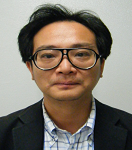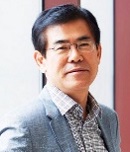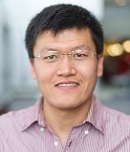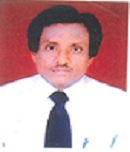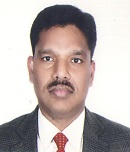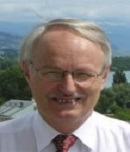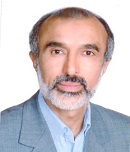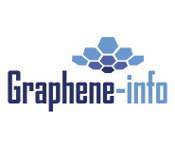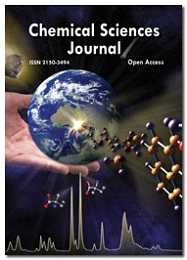Theme: Enlighten the Advancement in Organic & Inorganic Chemistry
Organic Chemistry 2017
ConferenceSeries.com hosts 3000+ Global Events that includes over 1000+ International Conferences, 1000+ Symposiums and 1000+Workshops and preconference workshops on diverse Medical, Pharmaceutical, Clinical, Engineering, Science, Technology, Business and Management fields. Over 25 Million visitors flock to our websites to observe the attest developments in these fields.
Track 1: Advanced Synthesis and Catalysis
Catalysis is the expansion in the rate of a synthetic response because of the cooperation of an extra substance called a catalyst. As a rule, responses happen speedier with a catalyst since they require less enactment vitality. Moreover since they are not expended in the catalyzed response, impetuses can keep on acting over and over. Frequently just little sums are required on a basic level. A portion of the biggest scale chemicals are delivered by means of reactant oxidation, frequently utilizing oxygen. Cases incorporate nitric corrosive (from alkali), sulfuric corrosive (from sulfur dioxide to sulfur trioxide by the load procedure), terephthalic corrosive from p-xylene, and acrylonitrilefrom propane and smelling salts.
Many fine chemicals are readied by means of catalysis; techniques incorporate those of overwhelming industry and additionally more specific procedures that would be restrictively costly on a vast scale. Cases incorporate the Heck response, and Friedel-Crafts responses. Since most bioactive mixes are chiral, numerous pharmaceuticals are created by enantioselective catalysis (synergist hilter kilter amalgamation).
Related Conferences of Advanced Synthesis and Catalysis
11th World Congress on Pharmaceutical Sciences and Innovations in Pharma Industry Feb 27- 28, 2017 Amsterdam, Netherlands; 10th International Conference and Exhibition on Pharmaceutics & Novel Drug Delivery Systems March 13-15, 2017 London, UK; International Conference and Exhibition on Pharmaceutical Development and Technology April 24-26, 2017 Dubai, UAE; 10th Asia-Pacific Pharma Congress May 08-10, 2017 Singapore; 2nd International Conference and Exhibition on Marine Drugs & Natural Products June 15-17, 2017 London, UK; 9th Annual Congress on Drug Formulation & Drug Design October 19-21, 2017 Seoul, South Korea; 4th International Conference on Clinical Trials September 11-13, 2017 San Antonio, USA.
Track 2: Bioorganic and Biochemistry
Bioorganic chemistry applies the principles and methods of organic chemistry to solve problems of biological relevance. Such an understanding is often achieved with the aid of molecular models chemically synthesized in the Industries and laboratory. This allows a extracting of the many variable parameters simultaneously operative within the biological system. Biological membrane work as one builds a simple model of known compositions and studies a single behavior, such as an ion transport property. Organic chemist develops synthetic methodology to better understanding organic mechanisms and create new compounds. On the other hand it includes study of life processing by means of biochemical methodology like enzyme purification and assay, radioisotope tracer studies in in-vivo system. A new dimension results from this combination of chemical and biological science that is the concept of model building to study and sort out the various parameters of a complex biological process. By means of simple organic models, many biological reactions as well as the specificity and efficiency of the enzyme involved have been reproduced in test tube. The major theme of the pharmaceutical industry is to extrapolation of multidisciplinary science to the pathological state, organic chemist and pharmacologists working together so the bioorganic chemistry is to biochemistry as medicinal chemistry is to pharmacology. Biochemistry, sometimes called biological chemistry, is the study of chemical processes within and relating to living organisms. The four main classes of molecules in biochemistry often called biomolecules are carbohydrates, lipids, proteins, and nucleic acids. Biochemistry focuses on processes happening at a molecular level. It focuses on what’s happening inside our cells, studying components like proteins, lipids and organelles. It also looks at how cells communicate with each other.
Related Conferences of Bioorganic and Biochemistry
4th International Conference on Past and Present Research Systems of Green Chemistry October 16-18, 2017 Atlanta, USA; 11th World Congress on Pharmaceutical Sciences and Innovations in Pharma Industry Feb 27- 28, 2017 Amsterdam, Netherlands; International chemistry conferences/meetings/symposiums; 9th World Congress on Chemistry November 13-15, 2017 Lisbon, Portugal; Annual Meeting on Forensic Chemistry May 1-3, 2017 Barcelona, Spain; 4th European Chemistry Congress May 11-13, 2017 Barcelona, Spain; 2nd International conference on Industrial Chemistry and Water Treatment May 22-23, 2017 Las Vegas, USA; 4th World Congress on Mass Spectrometry June 19-21, 2017 London, UK; International Conference on Stereochemistry August 18-19, 2016 Sao Paulo, Ibirapuera, Brazil; 6th International Conference on Current Trends in Mass Spectrometry September 25-27, 2017 Atlanta, USA.
Track 3: Organometallic Chemistry
Organometallic chemistry is the study of compounds containing at least one bond between a carbon atom of an organic compound and a metal, including alkaline, alkaline earth, transition metal, and other cases. Organometallic compounds are widely used both stoichiometrically in research and industrial chemical reactions, as well as in the role of catalysts to increase the rates of such reactions as in uses of homogeneous catalysis, where target molecules include polymers, pharmaceuticals, and many other types of practical products. Organometallic compounds are in which organic group are linked directly to the metal through at least one carbon atom. Compounds like Ti(OC4H9)4, Ca{N(CH3)2}2 and Fee(SC5H11)3 are therefore, not included in the list of organometallic compounds, although C6H5Ti(OC4H9)3 and (C5H5)2Zr(OOCCH3)2, would be organometallics. Organic group can be bound, is one way or the other, to almost all the elements in the periodic table and potentially therefore the number of organometallic compounds is almost unlimited. Based on organometallic catalysis in olefin polymerization a whole new technology was evolved. Nobel prizes for chemistry have been awarded to Zieglar and Natta (1963), Fischer and Willkinson (1973) for the discoveries in Organometallic chemistry and homogeneous catalysis.
Related Conferences of Organometallic Chemistry
International Conference on Environmental Chemistry and Engineering July 27-28, 2017 Rome, Italy; 9th International Conference and Exhibition on Analytical & Bio analytical Techniques September 28-29, 2017 Atlanta, USA; International chemistry conferences/meetings/symposiums; 10th Asia-Pacific Pharma Congress May 08-10, 2017 Singapore; World Congress on Plasma Chemistry November 13-14, 2017 Lisbon, Portugal; International Conference on Photochemistry and Spectroscopy June 29-30, 2017 Baltimore, USA; International conference on Electrochemistry July 10-11, 2017 Berlin, Germany; 2nd International Conference and Exhibition on Marine Drugs & Natural Products June 15-17, 2017 London, UK; 9th Annual Congress on Drug Formulation & Drug Design October 19-21, 2017 Seoul, South Korea; 4th International Conference on Clinical Trials.
Track 4: Advance Trends in Organic Chemistry
Combinatorial chemistry is used to synthesize large number of chemical compounds by combining sets of building blocks. It is a laboratory technique in which millions of molecular constructions can be synthesized and tested for biological activity. Combinatorial chemistry comprises synthetic chemical methods to prepare a large number of compounds in a single process. In pharmacological assay combinatorial chemistry technique are employed in which large numbers of structurally distinct molecules may be synthesized in a time and submitted. Combinatorial chemistry is primarily used by organic chemists who are seeking new drugs; combinatorial chemistry is employed to other fields such as semiconductors, superconductors, catalysts and polymers. Materials science is a syncretic discipline study of hybridizing metallurgy, ceramics, solid-state physics, and chemistry. It is the first example of a new academic discipline emerging by fusion rather than fission. Different types of materials are solid-state, crystalline state, amorphous, and metals, polymer materials and Nano materials. Microwave chemistry is the science of applying microwave radiation to chemical reactions, Microwave energy, originally applied for heating foodstuff by Percy spencer in the 1940s, has found a variety of technical application in the chemical and related industries since 1950’s in particular in food processing drying, and polymer industry. Other application range from analytical chemistry called microwave sterilization.
Related conferences of Advance Trends in Organic Chemistry
4th World Congress on Chromatography August 07-09, 2017 Rome, Italy; 10th Asia-Pacific Pharma Congress May 08-10, 2017 Singapore; 2nd International Conference and Exhibition on Marine Drugs & Natural Products June 15-17, 2017 London, UK; 9th Annual Congress on Drug Formulation & Drug Design October 19-21, 2017 Seoul, South Korea; 4th International Conference on Clinical Trials September 11-13, 2017 San Antonio, USA; Global Conference on Physical Chemistry April 17-18, 2017 Las Vegas, USA; International chemistry conferences/meetings/symposiums; 2nd International Conference and Exhibition on Materials Chemistry April 24-26, 2017 Frankfurt, Germany; Annual Meeting on Forensic Chemistry May 1-3, 2017 Barcelona, Spain; International Conference on Environmental Chemistry July 24-26, 2017 Rome, Italy; Southen Nevada Local Section of the American Chemical Society; American Chemistry Council .
Track 5: Inorganic and Bioinorganic Catalysis
Bioinorganic science is a field that looks at the part of metals in science. Bioinorganic science incorporates the investigation of both natural phenomena, the conduct of metalloproteinase and also misleadingly presented metals, including those that are trivial, in medication and toxicology. Numerous organic procedures, for example, breath rely on particles that fall inside the domain of inorganic science. The train additionally incorporates the investigation of inorganic models or mimics that imitate the behaviour of metalloproteinase. Metal ions are known to play an essential role in living system, both in growth and in metabolism. About 99% of mammals' mass are the elements carbon, nitrogen, calcium, sodium, chlorine, potassium, hydrogen, phosphorus, oxygen and sulfur. Proteins, lipids and carbohydrates contain the majority of the carbon and nitrogen and most of the oxygen and hydrogen is present as water. The entire collection of metal-containing biomolecules in a cell is called the metallom. A heterogeneous catalyst has active sites, which are the atoms or crystal faces where the reaction actually occurs. Types of catalysis are Heterogeneous catalysts Electrocatalysts, Homogeneous catalysts, Organ catalysis, Enzymes and biocatalysts, Nanocatalysts, Tandem catalysis, Autocatalysis.
Related conferences of Inorganic and Bioinorganic Catalysis
Global Conference on Physical Chemistry April 17-18, 2017 Las Vegas, USA; International chemistry conferences/meetings/symposiums; 2nd International Conference and Exhibition on Materials Chemistry April 24-26, 2017 Frankfurt, Germany; Annual Meeting on Forensic Chemistry May 1-3, 2017 Barcelona, Spain; International Conference on Environmental Chemistry July 24-26, 2017 Rome, Italy; Southen Nevada Local Section of the American Chemical Society; American Chemistry Council , 4th World Congress on Chromatography August 07-09, 2017 Rome, Italy; 10th Asia-Pacific Pharma Congress May 08-10, 2017 Singapore; 2nd International Conference and Exhibition on Marine Drugs & Natural Products June 15-17, 2017 London, UK; 9th Annual Congress on Drug Formulation & Drug Design October 19-21, 2017 Seoul, South Korea; 4th International Conference on Clinical Trials September 11-13, 2017 San Antonio, USA.
Track 6: Physical Organic Chemistry
Physical organic chemistry alludes to a teach of natural science that spotlights on the relationship between synthetic structures and reactivity, specifically, applying trial devices of physical science to the investigation of natural atoms. Particular central purposes of study incorporate the rates of natural responses, the Organic Chemistry relative concoction strong qualities of the beginning materials, receptive intermediates, move states, and results of compound responses, and non-covalent parts of solvation and sub-atomic communications that impact synthetic reactivity. Such reviews give hypothetical and pragmatic systems to see how changes in structure in arrangement or strong state settings affect response instrument and rate for every natural response of intrigue. The field has applications to a wide assortment of more specific fields, including electro-and photochemistry, polymer and supramolecular science, and bioorganic science, enzymology, and synthetic science, and in addition to business ventures including process science, substance designing, materials science and nanotechnology, and medication revelation.
Related Conferences of Physical Organic Chemistry
11th World Congress on Pharmaceutical Sciences and Innovations in Pharma Industry Feb 27- 28, 2017 Amsterdam, Netherlands; 10th International Conference and Exhibition on Pharmaceutics & Novel Drug Delivery Systems March 13-15, 2017 London, UK; International Conference and Exhibition on Pharmaceutical Development and Technology April 24-26, 2017 Dubai, UAE; 10th Asia-Pacific Pharma Congress May 08-10, 2017 Singapore; 2nd International Conference and Exhibition on Marine Drugs & Natural Products June 15-17, 2017 London, UK; 9th Annual Congress on Drug Formulation & Drug Design October 19-21, 2017 Seoul, South Korea; 4th International Conference on Clinical Trials September 11-13, 2017 San Antonio, USA.
Track 7: Natural Products and Heterocyclic Chemistry
Natural products are chemical compound produced by a living organism that is found in nature. Natural products remain the best sources of drugs and drug leads, natural products research in favor of HTP screening of combinatorial libraries during the past 2 decades. Natural products possess structural and chemical diversity that is unsurpassed by any synthetic libraries. More than 40% of the chemical scaffolds found in natural products are absent in now-a-days medicinal chemistry repertoire. Based on various chemical properties, combinatorial compounds occupy a much smaller area in molecular space than natural products. Natural products undergo primary metabolites and secondary metabolites, Natural products under go biosynthesis and produce carbohydrates and fatty acids and polyketides. Their main sources are from prokaryotic, bacteria, archaea, eukaryotic, fungi, plants, animals. Heterocyclic chemistry dealing with the synthesis, properties, and applications of heterocyclic compound. A cyclic organic compound containing all carbon atoms in ring formation is referred to as a carbocyclic compound. If at least one atom other than carbon forms a part of the ring system then it is designed as a hetero-cyclic compound. Nitrogen, oxygen and sulfur are the most common heteroatoms but heterocyclic rings containing other hetero atoms are also widely known. An enormous number of heterocyclic compounds may be classified into aliphatic and aromatic. Heterocyclic ring may comprise of three or more atoms which may be saturated or unsaturated. Also the ring may contain more than one hetero atom which may be similar or dissimilar.
Related conferences of Natural products and Heterocyclic Chemistry
World Congress on Plasma Chemistry November 13-14, 2017 Lisbon, Portugal; International Conference on Photochemistry and Spectroscopy June 29-30, 2017 Baltimore, USA; International conference on Electrochemistry July 10-11, 2017 Berlin, Germany; International Conference on Environmental Chemistry and Engineering July 27-28, 2017 Rome, Italy; 9th International Conference and Exhibition on Analytical & Bio analytical Techniques September 28-29, 2017 Atlanta, USA; International chemistry conferences/meetings/symposiums; 11th World Congress on Pharmaceutical Sciences and Innovations in Pharma Industry Feb 27- 28, 2017 Amsterdam, Netherlands; 10th International Conference and Exhibition on Pharmaceutics & Novel Drug Delivery Systems March 13-15, 2017 London, UK; International Conference and Exhibition on Pharmaceutical Development and Technology April 24-26, 2017 Dubai, UAE.
Track 8: Modern Organic Chemistry and Applications
Modern Analytical chemistry studies and uses instruments and methods used to separate, identify, and quantify matter. Instruments used are Spectroscopy Mass spectrometry, electrochemical analysis, Thermal analysis, Separation, Hybrid techniques, Microscopy, Lab-on-a-chip. Modern analytical chemistry consists of classical, wet chemical methods and modern, instrumental methods. Pharmaceutical Analytical Chemistry is an interdisciplinary branch between Pharmacy and Medicinal Chemistry, Pharmacology, Pharmacognosy, Pharmaceutical Analysis, Computational Chemistry & Molecular Modelling, Drug Design, Pharmacokinetics, Pharmacodynamics, Pharmacoinformatics, Pharmacovigilance, Chemo informatics, Pharmacogenomics. Nano catalysis is recently growing field and is crucial component of sustainable technology and organic transformations applicable to almost all types of catalytic organic transformations. Among nanocatalysts, several forms such as magnetic nanocatalysts, nano mixed metal oxides, core-shell nanocatalysts, nano-supported catalysts, graphene-based nanocatalysts have been employed in catalytic applications. The field of benign organic synthesis has lately embraced various innovative scientific developments accompanied by improved and effective synthetic practices that avoid the use of toxic reagents reactants. Modern theoretical chemistry is the examination of the structural and dynamic properties of molecules and molecular materials using the tools of quantum chemistry, equilibrium and nonequilibrium statistical mechanics and dynamics. Theoretical organic chemistry includes the fundamental laws of physics Coulomb's law, Kinetic energy, Potential energy, the virial theorem, Planck's Law, Theoretical chemistry comprises of Quantum chemistry, Computational chemistry, Molecular modelling, Molecular modelling, Mathematical chemistry, Theoretical chemical kinetics, Cheminformatics.
Related Conferences of Modern Organic Chemistry and Applications
World Congress on Plasma Chemistry November 13-14, 2017 Lisbon, Portugal; International Conference on Photochemistry and Spectroscopy June 29-30, 2017 Baltimore, USA; International conference on Electrochemistry July 10-11, 2017 Berlin, Germany; International Conference on Environmental Chemistry and Engineering July 27-28, 2017 Rome, Italy; 9th International Conference and Exhibition on Analytical & Bio analytical Techniques September 28-29, 2017 Atlanta, USA; International chemistry conferences/meetings/symposiums; 11th World Congress on Pharmaceutical Sciences and Innovations in Pharma Industry Feb 27- 28, 2017 Amsterdam, Netherlands; 10th International Conference and Exhibition on Pharmaceutics & Novel Drug Delivery Systems March 13-15, 2017 London, UK; International Conference and Exhibition on Pharmaceutical Development and Technology April 24-26, 2017 Dubai, UAE.
Track 9: Medicinal Chemistry, Drug Synthesis
Medicinal chemistry deals with development and synthesis of pharmaceutical drugs. The discipline combines expertise from chemistry and pharmacology to identify the lead molecule called as pharmacophore, development and synthesize chemical agents that have a therapeutic use and to evaluate the properties of drugs. Enantioselective synthesis, also called chiral synthesis and asymmetric synthesis is a multidisciplinary form of chemical synthesis. Enantioselective catalysis known traditionally as asymmetric catalysis refers to the use of chiral coordination complexes as catalysts. This approach is very commonly encountered, as it is effective for a broader range of transformations than any other method of enantioselective synthesis. Synthetic organic chemists and medicinal chemists have the power to replicate some of the most intriguing molecules of living nature in the laboratory and apply their developed synthetic strategies and technologies to construct variations of them. The quality and purity of the obtained synthetic organic compounds is essential because of its complexity. Whether in agrochemical or biotechnology, Chemical synthesis stills a complex area.
Related conferences of Medicinal Chemistry, Drug Synthesis
International Conference on Environmental Chemistry July 24-26, 2017 Rome, Italy; International chemistry conferences/meetings/symposiums; International Conference on Pharmaceutical Chemistry October 02-04, 2017 Spain; Past and Present Research Systems of Green Chemistry October 16-18, 2017 Atlanta, USA; Global Conference on Physical Chemistry April 17-18, 2017 Las Vegas, USA; 2nd International Conference and Exhibition on Materials Chemistry April 24-26, 2017 Frankfurt, Germany; Annual Meeting on Forensic Chemistry May 1-3, 2017 Barcelona, Spain; American Chemical Society; Royal Society of chemistry; Society of synthetic Organic Chemistry ; 11th World Congress on Pharmaceutical Sciences and Innovations in Pharma Industry Feb 27- 28, 2017 Amsterdam, Netherlands; 10th International Conference and Exhibition on Pharmaceutics & Novel Drug Delivery Systems March 13-15, 2017 London, UK; International Conference and Exhibition on Pharmaceutical Development and Technology April 24-26, 2017 Dubai, UAE.
Track 10: Industrial Inorganic Chemistry
Inorganic Chemistry is the study of the structures, properties, and behaviours and reactions, of elements, mixtures in solutions, and chemical compounds that do not contain carbon-hydrogen bonds, Industrial inorganic chemistry includes subdivisions of the chemical industry that manufacture inorganic products on a large scale such as the heavy inorganics sulfates chlor-alkalis, sulfuric acid, and fertilizers. The chemical industry adds value to raw materials by transforming them into the chemicals required for the manufacture of consumer products. The top 20 inorganic chemicals manufactured in India, Japan, Canada, China, Europe and the US in the year 2005. Traditionally, the scale of a nation's economy could be evaluated by their productivity of sulfuric acid. Inorganic chemistry is a highly practical area of science. Inorganic compounds which are mostly manufactured are hydrogen, hydrogen peroxide, nitric acid, nitrogen carbon black, chlorine, hydrochloric acid, oxygen, phosphoric acid, sodium carbonate, sodium chlorate, sodium hydroxide, sodium silicate, sodium sulfate, sulfuric acid, aluminium sulfate, ammonia, ammonium nitrate, ammonium sulfate and titanium dioxide. The manufacturing of fertilizers is another practical application of industrial inorganic chemistry.
Related Conferences of Industrial Inorganic Chemistry
International Conference on Environmental Chemistry and Engineering July 27-28, 2017 Rome, Italy; 9th International Conference and Exhibition on Analytical & Bio analytical Techniques September 28-29, 2017 Atlanta, USA; International chemistry conferences/meetings/symposiums; 10th Asia-Pacific Pharma Congress May 08-10, 2017 Singapore; World Congress on Plasma Chemistry November 13-14, 2017 Lisbon, Portugal; International Conference on Photochemistry and Spectroscopy June 29-30, 2017 Baltimore, USA; International conference on Electrochemistry July 10-11, 2017 Berlin, Germany; 2nd International Conference and Exhibition on Marine Drugs & Natural Products June 15-17, 2017 London, UK; 9th Annual Congress on Drug Formulation & Drug Design October 19-21, 2017 Seoul, South Korea; 4th International Conference on Clinical Trials.
Track 11: Inorganic Materials and Nanoparticles
Transition metals are usually present as trace elements in organisms, with iron and zinc being most abundant. These metals are used in some proteins as cofactors and are essential for the activity of enzymes such as catalase and oxygen-carrier proteins such as hemoglobin. Metal homeostasis is broadly defined as the metal uptake, trafficking, efflux, and sensing pathways that allow organisms to maintain an appropriate often narrow intracellular concentration range of essential transition metals. Metal centers are essential and abundant cofactors in fundamental life processes such as photosynthesis, respiration, and hydrogen, nitrogen carbon, and sulfur metabolism, and the number and diversity of metalloproteins and the biological roles for metal centers continue to proliferate unabated. Indeed, metal centers are estimated to be present in approximately one half of all proteins and to constitute the active sites of at least one third of all enzymes. Metalloprotein is a generic term for a protein that contains a metal ion cofactor. A large number of all proteins are part of this category. Metalloproteins have captivated chemists and biochemists, particularly since the 1950s, when the first X-ray crystal structure of a protein, sperm whale myoglobin, indicated the presence of an iron atom. They account for nearly half of all proteins in nature. Transition metals are a key component of biological systems. Because of their special properties, they are incorporated into proteins functioning in dioxygen transport, electron transfer, redox transformations, and regulatory control. The metals used in biological systems have been selected throughout evolution based on their availability in the environment and their kinetic lability, resulting in preferential use of first-row transition metals in biology.
Related Conferences of Inorganic Materials and Nanoparticles
11th World Congress on Pharmaceutical Sciences and Innovations in Pharma Industry Feb 27- 28, 2017 Amsterdam, Netherlands; 10th International Conference and Exhibition on Pharmaceutics & Novel Drug Delivery Systems March 13-15, 2017 London, UK; International Conference and Exhibition on Pharmaceutical Development and Technology April 24-26, 2017 Dubai, UAE; International chemistry conferences/meetings/symposiums; 9th World Congress on Chemistry November 13-15, 2017 Lisbon, Portugal; Annual Meeting on Forensic Chemistry May 1-3, 2017 Barcelona, Spain; 4th European Chemistry Congress May 11-13, 2017 Barcelona, Spain; 2nd International conference on Industrial Chemistry and Water Treatment May 22-23, 2017 Las Vegas, USA; 4th World Congress on Mass Spectrometry June 19-21, 2017 London, UK; ; 6th International Conference on Current Trends in Mass Spectrometry September 25-27, 2017 Atlanta, USA; International chemistry conferences/meetings/symposiums.
Track 12: Stereochemistry of Organic Compounds
The study of stereochemistry focuses on stereoisomers and spans the entire spectrum of organic, inorganic, biological, physical and especially supramolecular chemistry. Stereochemistry is the chemistry which deals with the different arrangement of atoms or groups in a molecule in space. Louis Pasteur was the first stereochemist, having observed in 1849 from wine collected salts of tartaric acid production vessels could rotate plane polarized light, but that salts from other sources. The only physical property in which the two types of tartrate salts differed, is due to optical isomerism. Stereochemistry plays a very vital role in our day to day life. It has been observed that many living systems, plants and many pharmaceuticals possess or respond to only a particular type of arrangement in a molecule and are found to be stereospecific in nature, for example the double helical form of D.N.A turns in a right handed way, honey suckle winds as a left handed helix. Only one form of sugar plays a unique role in animal metabolism and is the basis of a multimillion dollar fermentation industry. Structural Isomers are isomers which have the same molecular formula but differ in their structures. The list of different types of structural isomers is position isomer, chain Isomers, metamerism, and functional Isomers. Stereoisomers are isomers which have the same molecular formula and same structure but differ in the arrangement of atoms or groups in space. Stereoisomers can be classified into the following two types Conformational Isomers and Configurational Isomers.
Related Conferences of Stereochemistry of Organic Compounds
4th International Conference on Past and Present Research Systems of Green Chemistry October 16-18, 2017 Atlanta, USA; 11th World Congress on Pharmaceutical Sciences and Innovations in Pharma Industry Feb 27- 28, 2017 Amsterdam, Netherlands; International chemistry conferences/meetings/symposiums; 9th World Congress on Chemistry November 13-15, 2017 Lisbon, Portugal; Annual Meeting on Forensic Chemistry May 1-3, 2017 Barcelona, Spain; 4th European Chemistry Congress May 11-13, 2017 Barcelona, Spain; 2nd International conference on Industrial Chemistry and Water Treatment May 22-23, 2017 Las Vegas, USA; 4th World Congress on Mass Spectrometry June 19-21, 2017 London, UK; International Conference on Stereochemistry August 18-19, 2016 Sao Paulo, Ibirapuera, Brazil; 6th International Conference on Current Trends in Mass Spectrometry September 25-27, 2017 Atlanta, USA.
Track 13: Green Chemistry and Sustainable Technology
Green chemistry, also called sustainable chemistry, is a territory of science and compound building concentrated on the planning of items and procedures that minimize the utilization and era of perilous substances. While environmental chemistry concentrates on the impacts of contaminating chemicals on nature, Green chemistry concentrates on innovative ways to deal with forestalling contamination and lessening utilization of nonrenewable assets.
Green chemistry covers with all subdisciplines of science however with a specific concentrate on chemical synthesis, process chemistry, and chemical engineering, in modern applications. To a lesser degree, the standards of green chemistry additionally influence research center practices. The all-encompassing objectives of green chemistry —in particular, more asset effective and inalienably more secure plan of particles, materials, items, and procedures—can be sought after in an extensive variety of settings.
Related conferences of Green Chemistry and Sustainable Technology
4th World Congress on Chromatography August 07-09, 2017 Rome, Italy; 10th Asia-Pacific Pharma Congress May 08-10, 2017 Singapore; 2nd International Conference and Exhibition on Marine Drugs & Natural Products June 15-17, 2017 London, UK; 9th Annual Congress on Drug Formulation & Drug Design October 19-21, 2017 Seoul, South Korea; 4th International Conference on Clinical Trials September 11-13, 2017 San Antonio, USA; Global Conference on Physical Chemistry April 17-18, 2017 Las Vegas, USA; International chemistry conferences/meetings/symposiums; 2nd International Conference and Exhibition on Materials Chemistry April 24-26, 2017 Frankfurt, Germany; Annual Meeting on Forensic Chemistry May 1-3, 2017 Barcelona, Spain; International Conference on Environmental Chemistry July 24-26, 2017 Rome, Italy; Southen Nevada Local Section of the American Chemical Society; American Chemistry Council.
Track 14: Polymer Chemistry
Polymer chemistry is a science subdiscipline that arrangements with the structures, compound blend and properties of polymers, fundamentally engineered polymers, for example, plastics and elastomers. Polymer science is identified with the more extensive field of polymer science, which likewise envelops polymer material science and polymer building. Polymers are high sub-atomic mass mixes framed by polymerization of monomers. The basic responsive particle from which the rehashing auxiliary units of a polymer are inferred are called monomer. A polymer is synthetically portrayed by its level of polymerisation, molar mass dissemination, tacticity, copolymer appropriation, the level of fanning, by its end-bunches, crosslinks, crystallinity and warm properties, for example, its glass move temperature and softening temperature. Polymers in arrangement have uncommon attributes as for solvency, consistency and gelation.
Related Conferences of Polymer Chemistry
International Conference on Environmental Chemistry and Engineering July 27-28, 2017 Rome, Italy; 9th International Conference and Exhibition on Analytical & Bio analytical Techniques September 28-29, 2017 Atlanta, USA; International chemistry conferences/meetings/symposiums; 10th Asia-Pacific Pharma Congress May 08-10, 2017 Singapore; World Congress on Plasma Chemistry November 13-14, 2017 Lisbon, Portugal; International Conference on Photochemistry and Spectroscopy June 29-30, 2017 Baltimore, USA; International conference on Electrochemistry July 10-11, 2017 Berlin, Germany; 2nd International Conference and Exhibition on Marine Drugs & Natural Products June 15-17, 2017 London, UK; 9th Annual Congress on Drug Formulation & Drug Design October 19-21, 2017 Seoul, South Korea; 4th International Conference on Clinical Trials.
Track 15: Organic Chemical Engineering
Organic Chemical engineering is a branch of engineering that applies physical sciences (physical science and organic natural science), life sciences (microbiologyand organic chemistry), together with connected arithmetic and financial matters to deliver, change, transport, and appropriately utilize chemicals, materials and vitality. Basically, substance engineers outline expansive scale forms that change over chemicals, crude materials, living cells, microorganisms and vitality into helpful structures and items.
Related Conferences of Organic Chemical Engineering
4th International Conference on Past and Present Research Systems of Green Chemistry October 16-18, 2017 Atlanta, USA; 11th World Congress on Pharmaceutical Sciences and Innovations in Pharma Industry Feb 27- 28, 2017 Amsterdam, Netherlands; International chemistry conferences/meetings/symposiums; 9th World Congress on Chemistry November 13-15, 2017 Lisbon, Portugal; Annual Meeting on Forensic Chemistry May 1-3, 2017 Barcelona, Spain; 4th European Chemistry Congress May 11-13, 2017 Barcelona, Spain; 2nd International conference on Industrial Chemistry and Water Treatment May 22-23, 2017 Las Vegas, USA; 4th World Congress on Mass Spectrometry June 19-21, 2017 London, UK; International Conference on Stereochemistry August 18-19, 2016 Sao Paulo, Ibirapuera, Brazil; 6th International Conference on Current Trends in Mass Spectrometry September 25-27, 2017 Atlanta, USA.

Conference Series LLC Ltd hosts 3000+ Global Events that includes over 1000+ International Conferences, 1000+ Symposiums and 1000+Workshops and preconference workshops on diverse Medical, Pharmaceutical, Clinical, Engineering, Science, Technology, Business and Management fields. Over 25 Million visitors flock to our websites to observe the attest developments in these fields.
Conferences Series welcomes professional chemists, life science expertise researchers, professors, scientific communities, delegates, students, business professionals and executives from all over the world to attend the “3rd International Conference on Organic & Inorganic Chemistry” which is going to be held during July 17-19, 2017, Chicago, USA which includes prompt keynote presentations, Oral talks, Poster presentations and Exhibitions.
Organic Chemistry 2017 is a global platform to discuss and learn about new compounds and its structure, bonding, reactivity in field of organic chemistry and organometallic chemistry, organic geochemistry, biogeochemistry, marine geochemistry, petroleum geochemistry, Bioorganic and medicinal chemistry. Advancement in fields of modern experimental organic chemistry, modern analytical organic chemistry, modern theoretical organic chemistry, combinatorial Chemistry, flow chemistry, green chemistry, microwave chemistry, microwave spectroscopy, new synthetic methods and advances in catalysis
In the light of this theme, the conference series aims to provide a forum for international researchers from various areas of chemistry, pharmacy, materials science and chemical engineering by providing a platform for critical analysis of new data, and to share latest cutting-edge research findings and results about all aspects of Organic Chemistry. The meeting will be a multidisciplinary gathering and present major areas such as organometallic, medicinal chemistry, polymer chemistry and overall applications.
Conference Series LLC Ltd organizes 1000+ Global events every year across the globe with support from 1000+ more scientific societies and Publishes 700 Open access journals which contains over 50000 eminent personalities, reputed scientists as editorial board members.
Target Audience:
Organic Chemists
Inorganic Chemists
Professors in Chemistry
Associate and Assistant Professors in Organic Chemistry
Post doctorals and Researchers in Chemistry
Heads of Chemical Departments
Post Graduates and Graduates in Medicinal Chemistry
Laboratory Chemists
Chemical Scientists working on Materials
Experts in the development of Organometallic Chemistry
Why to Attend:
With members from around the world focused on learning about Chemistry, organic and inorganic chemistry; this is your single best opportunity to reach the largest assemblage of participants. Conduct demonstrations, distribute information, meet with current and potential customers, make a splash with a new product line, and receive name recognition at this 3-day event. World renowned speakers, the most recent techniques, tactics, and the newest updates in fields are hallmarks of this conference.
Target Audience:
Directors, Presidents & CEO’s from organizations, Chemical Instrument Vendors Professors and Students from Academia in the study of chemistry related studies, delegates from various Chemical, pharma, argochemicals companies from all over the world.
Global Market in Organic Chemistry
The Organic Chemical Manufacturing industry has a high level of capital intensity. For every dollar spent on labor, the industry spends an estimated $0.61 on capital, which indicates that many of the processes are automated with many of the products being mass-produced. Because of the high level of technology use, many firms operating within this industry employ fewer than 20 workers. During the recession, the industry came to rely even more heavily on capital since employment was one of the easiest places to cut costs. However, employment and wages will increase over the next five years as industry players invest more in human resources and expand their research and development teams to become more efficient and remain competitive. The Organic Chemical Manufacturing industry has rapidly expanded over the past five years. The industry, which provides raw materials to different industries, such as plastic, paint and adhesive manufacturing, is anticipated to increase strongly over the five years to 2016-17. In the coming years, Demand from key buying industries will expand, driven by higher consumer consumption and an increase in exports. The Organic Chemical Manufacturing market research report provides key industry analysis and industry statistics, measures market size, analyzes current and future industry trends and shows market share for the industry’s largest companies. IBIS World publishes the largest collection of industry reports so you can see an industry’s supply chain, economic drivers and key buyers and markets.
Organic Chemistry 2017 is an international platform for presenting research about chemistry and related fields thus contributes to the dissemination of knowledge for the benefit of both the academia and business. This event brings together the top professionals in the field along with the highly affiliated professors to explore the advancements and latest applications achieved in the field of chemistry. International Conference on Organic & Inorganic Chemistry 2017 discusses various fields of chemistry employed in theoretical, physical, organic, pharmaceutical, and life science fields which mark the support for the advanced and much needed research by their study on various topics. The scientific program will focus on current advances in the research and use of chemistry and related with particular focus on its roles and applications in various fields.
The forecast for R&D growth in the chemical and advanced materials industry reflects the improving global economy and the key markets the industry serves. U.S. R&D spending in chemicals and advanced materials is forecast to grow by 3.6% to reach $12 billion in 2014. Overall global R&D is forecast to grow at a slightly higher 4.7% rate to $45 billion in 2014.The R&D activities within the chemical and advanced materials industry reflects improvements in the U.S. and global economy, and the role this industry plays in support of other demand-driven industries. We forecast U.S. chemical and advanced materials R&D to increase by 3.6% in 2014, reaching $12.2 billion. Worldwide R&D is expected to increase by 4.7% to $45.3 billion.
Chemical Industries are the prime factors to convert the raw materials into desired products that we use in our day-to-day life. This has brought a tremendous change in the way the things operate. It is very important for us to understand the importance of the chemical industry which has touched all our facets of life like Agriculture, Environment, Food, Hygiene, Décor, and Transportation. It has also significantly used in re-cycling industries to curb the usage of virgin products. Re-cycling helps a lot in utilizing the waste materials, and gives one more life-cycle for the products. Chemicals play a major role in our food. The preservatives, taste enhancers and flavours helps the food to be palatable and increase the shelf life. Food Industry thrives for the reason, that the preservatives not only help them to maintain the quality of the food, but also helps them to import food to different parts of the world. Due to these advancements, we are able to enjoy fruits, canned food products, and ready-to-eat food products across the world. More than 80% of the chemical industry concentrates on producing polymers, and plastics. They are not only used in packing, but also in numerous other things, like wiring, furniture, clothing, home décor, prosthesis and electronics. PVC piping, water tanks, huge storage containers are made out of plastics.
Global Consumption of agricultural Fertilizer:
Fertilizers, and pesticides aids in the agriculture and development. The green revolution has happened only due to the advancement of chemical industry in India. The fertilizers and pesticides, not only increase the yield of the crop, but prevent from pest attacks. Apart from in-house usage of food products within our country, we are also exporting a lot of grains, fruits, flowers and ornamental stem to various parts of the world. The GDP of the country drastically increases with the industry. Pharma industries and lifesaving drugs are the fastest growing industry in India. Our country invites a lot of people for medical tour. Numerous laboratories are also set-up to study various drug for the endemic and epidemic diseases. Before these laboratories in our country, we have been exporting a lot of chemicals, which was expensive and mostly unaffordable for a large sector of people.
Global chemical fibre production:
The statistic shows the global production output of the chemical fiber industry by fiber type from 2000 to 2015. In 2000, some 28.4 million metric tons of synthetic fibers were produced worldwide.

World consumption of hydrochloric acid:
About 40 processes generate HCl as a coproduct and about 110 chemical manufacturing processes utilize hydrochloric acid as a raw material.
Globally, nearly 43% of all HCl consumption is for the production of EDC, and 68% is used in the production of organic compounds, most of which is captive consumption. The remaining consumption is in a number of inorganic or merchant applications.

Despite the recent slowdown of the Chinese economy, the country is expected to have the largest growth in HCl production and consumption during 2015–20. The second-largest growth rates are expected for North America, where chlorovinyls have grown with the competitive advantage of low feedstock prices and low energy prices following the unconventional oil boom in recent years. With the recent drop in oil prices this advantage is less pronounced, yet the investments that are made or are on the way will result in higher production. Consumption of HCl in the oil field sector declined again from the previous high to lower levels with the oil price drop. It is expected that oil prices will increase again and that HCl consumption will increase in line. The main producer of unconventional oil currently is the United States; however, China and Argentina are likely to also start large-scale production once the oil price increases to over $70/barrel.
World consumption of inorganic color pigments:

The primary drivers of inorganic color pigments consumption are growth in urbanization, which develops new application areas for paints and coatings, building materials, and plastics; market changes where developing countries market demand is increasing with rising income levels; and environmental regulations and standards. Worldwide markets for inorganic color pigments are expected to grow at slightly less than GDP growth rates during the next five years, at about 3.0–3.5%. While demand has remained stagnant in Western countries for the past few years, it has shown an increase in Asian countries, particularly China, where construction markets grew steadily between 2010 and 2014. In Japan, overall inorganic color pigment consumption is expected to remain stagnant to slightly declining, while growth will be stronger in Europe at 2% and in the United States at 2.5–3.0%. In Asian countries other than Japan, primarily China and India, consumption of pigments will grow significantly, particularly in construction materials and paints and coatings at a rate of 3.5%.
Major Associations & Society’s in World Wide:
Eastern Illinois University
Governors State University
University of Illinois at Chicago
University of Illinois at Springfield
Northeastern Illinois University
Northern Illinois University
Southern Illinois University Edwardsville
Western Illinois University
Department of Chemistry and Biochemistry University of Nevada, Las Vegas
Southen Nevada Local Section of the American Chemical Society
Chemistry Graduate Student Association (CGSA) Nevada, Reno
American Institute of Chemical Engineers (AIChE)
American Chemistry Council
American Institute of Chemists (AIC)
American Society for Biochemistry and Molecular Biology (ASBMB)
American Society for Mass Spectrometry (ASMS)
American Organization of Analytical Chemists (AOAC) International
Chemical Development and Marketing Association (CDMA)
American Chemical Society Division of the History of Chemistry (HIST)
The American Chemical Society: Organic Chemistry Division, Fluorine Chemistry Division
The Canadian Society for Chemistry, Organic Division
Royal Society of Chemistry Heterocyclic and Synthesis Group
Synthetic Organic Chemical Manufacturers Association
The Royal Australian Chemical Institute, Division of Organic Chemistry
Conference Highlights
- Stereochemistry of Organic Compounds
- Organometallic Chemistry
- Bioorganic and Biochemistry
- Modern Organic Chemistry and Applications
- Advanced Synthesis and Catalysis
- Advance Trends in Organic Chemistry
- Medicinal Chemistry, Drug Synthesis
- Natural Products and Heterocyclic Chemistry
- Inorganic and Bioinorganic Catalysis
- Inorganic Materials and Nanoparticles
- Industrial Inorganic Chemistry
- Green Chemistry and Sustainable Technology
- Polymer Chemistry
- Physical Organic Chemistry
- Organic Chemical Engineering
To share your views and research, please click here to register for the Conference.
To Collaborate Scientific Professionals around the World
| Conference Date | July 17-19, 2017 | ||
| Sponsors & Exhibitors |
|
||
| Speaker Opportunity Closed | Day 1 | Day 2 | Day 3 |
| Poster Opportunity Closed | Click Here to View | ||







